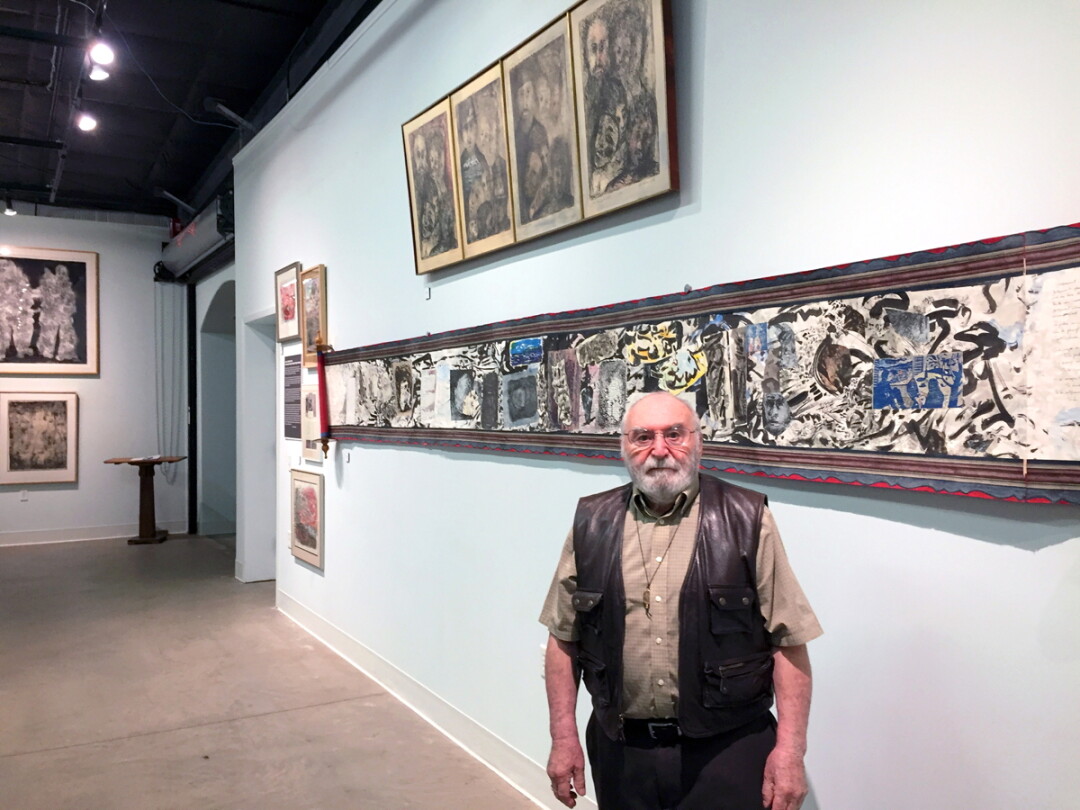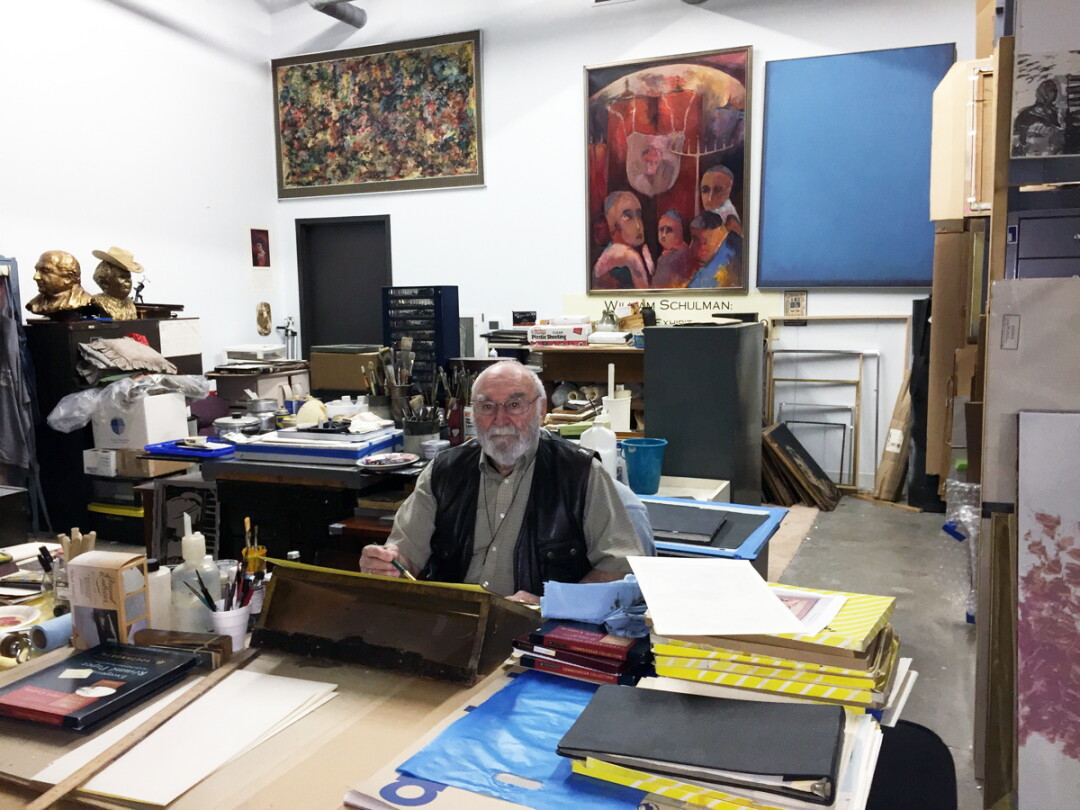‘Fire in Their Bellies’
exhibit highlights couple’s shared creative life as artists and educators
Pamela Powers, UW-Stout News |

Mickey Mouse helped inspire William Schulman to become an artist, starting him on a career path that led to being an art teacher and founder of UW-Stout’s art education department.
“I tried to learn to draw his ears,” Schulman said. “When you copy something, you want to make it perfect.”
From refining the famous cartoon character’s ears, Schulman continued to draw all his life, expanding into painting and mixed media.
“Artists are unique. When you have some of that art in you, you’ve got to get it out. How you get it out is a very personal thing.” – William Schulman, founder of UW-Stout’s art education department
Schulman, 88, was born in Winnipeg, Canada, the son of Romanian immigrants. Eventually he moved to Milwaukee and became a U.S. citizen. After joining the U.S. Army for two years he entered UW-Milwaukee, earning bachelor’s and master’s degrees in art education in 1964 and 1969, respectively.
While at UW-Milwaukee he met his wife, Shirley Siegel Schulman, 84, also an artist.
The Dunn County Historical Society at the Rassbach Heritage Museum recently opened a gallery exhibition of 55 pieces of the Schulmans’ art from more than a half century of their careers, their 16th exhibit together. The exhibit, “Art Inspired by the Dunn County Hills,” will remain open past Labor Day.
In 1982, the Schulmans developed a private studio, Studio Gallery, in their Menomonie home. It closed in 2007. Shirley focused on fiber arts and painting landscapes. Bill’s work took on current events, history and reflections on his Jewish faith. Today, Bill has a studio in the historical society’s Holtby Museum, where he continues to create artwork.
He taught art in the Milwaukee schools for about six years. In 1966 he was tapped to develop an art education program at UW-Stout. He helped some 200 art education majors get their degrees before he retired in 1992.

At first, Bill wasn’t sure he wanted to be a teacher, instead planning to be a studio artist. Then he realized his motivation for teaching was “to transfer the fire in my belly for art” to the students.
“The arts are unique,” he said. “Artists are unique. When you have some of that art in you, you’ve got to get it out. How you get it out is a very personal thing.
“I want people to have a fire in their bellies about all the arts,” he said, noting that he would like people to visit the show at least twice. In this manner, one might build a deeper appreciation and understanding of the works. “You have to ask yourself questions to understand if there is more there than meets the eye.”
Bill called some of his works “morose.” One encaustic painting – made with an ancient method of combining pigments with beeswax – depicts human skulls from the Rwandan genocide. “I think I want to express man’s inhumanity to man,” he said, noting his goal is to remember such atrocities so they are not repeated.
One of two large scroll collages in the exhibit, in the structural form of the Torah, includes selections of Bill’s hand-written poetry on judgment and time. He has written several poetry books over the years. In other artwork, he revisits the theme of playing cards, a nod to immigrants and an inexpensive pastime.

Shirley was a Hawthorne native who also studied art at UW-Milwaukee. They married in 1956. In 1978 she earned a master’s degree from UW-Stout in fiber art and taught at Menomonie High School and the Eau Claire Academy.
The couple have four children. She was diagnosed with Alzheimer’s disease about 10 years ago, which ended her art career.
Michael Pershern of Menomonie, a longtime friend of the Schulmans and a mentee, helped set up the exhibit.
“For me to see the breadth of the work of a couple, from their student days through the height of their professional careers and into retirement, is a great privilege,” Pershern said. “It is fairly remarkable to see the lifetime work of a couple.”
Frank Smoot, executive director of the historical society, said the exhibit represents “a half-century of Menomonie history of creating art. Dunn County is full of those stories of people doing amazing things.”
Having an artist in the Holtby Museum is part of the goal to have creative spaces and to encourage visitors to create. “It’s one of the things I truly love,” Smoot said. “I wish we had more artists and crafts people working in the museum in various ways.”
The Rassbach Heritage Museum is at 1820 Wakanda St. N.E., in Menomonie’s Wakanda Park. The exhibit is open during regular museum hours (11am-5pm Tuesdays through Sundays). Admission is $5 for adults and $3 for children. However, during the run of the Schulmans’ retrospective, admission will be free on Sundays.




















